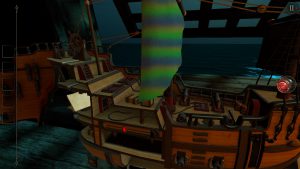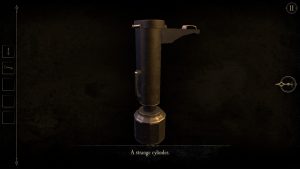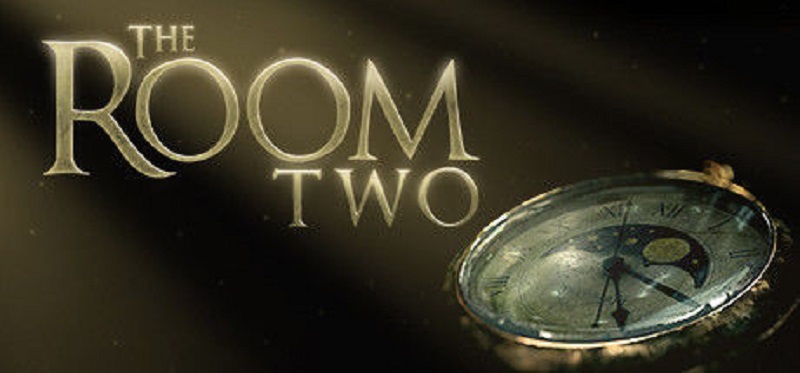Before we go any further, no, this is not a game about a Tommy Wiseau sequel. The storytelling and cinematography here are actually competently done, so get all your jokes about not hitting her and saying hi to Mark out of the way now.
This is the sequel to a very different The Room, which was a 2014 game revolving around puzzle-solving in an attempt to escape a locked area. Well, two years later, developer Fireproof Games decided to unleash another batch of mind-teasers and eerie atmosphere for gamers looking for a more cerebral gaming experience, and in 2016, they released today’s piece of the Big Steaming Pile, The Room Two.
Much like the original, The Room Two drops you off in a creepy, sealed room with a couple of tables with strange objects on them. An in-game tutorial explains the basic concepts of the game, how to pan the camera, how to zoom in and out on interesting items, how your inventory system works, how to manipulate objects in the game world, and also introduces you to your eyepiece, which can be used to spot hidden clues and activate certain triggers. After that, it’s up to you to solve the puzzles and escape the first of the game’s six levels.
Now, if you’re looking for a game that will make you think, The Room Two delivers. Just about every kind of puzzle you can imagine got crammed into this one: spatial reasoning, creative problem solving, critical thinking, searching for hidden switches, putting things together, taking things apart, switching back and forth between alternate versions of similar objects to advance, and picking up on subtle hints, all of that can be found here. That said, there’s a very difficult balance to strike in a game like this when it comes to the difficulty of the puzzles; make them too difficult and nobody’s gonna bother to finish, too easy, and people will feel cheated. I’m very happy to report that Fireproof Games did an outstanding job of balancing the difficulty level here, even with the game’s built-in hint system.

Y’see, if you’re stuck and not making any progress for a while, a hint becomes available by clicking a question mark at the top-left of the screen. There are usually multiple hints for each step of the level, so no matter where you’re caught, there’s always some help available. Amazingly, the hints do manage to give you a good idea of what you should be looking for instead of being blatantly hand-holdy, so even if you have all the hints for a certain spot, you’ll still have to do some thinking of you own. You can disable the hints in the options menu, however, I would not recommend doing so, not because the puzzles are so difficult, per se, but in most of the levels, there are multiple “workstations” of sorts with different devices on them, and the hints are useful for figuring out where you should start peeling back the onion. That isn’t to say there aren’t times where you’ll get stuck, as there are a couple of occasions where you’re expected to examine something you didn’t know you could even focus on, or you won’t quite understand what exactly you’re supposed to be fiddling with when you’re looking at an object, but for the most part, there won’t be any situations where you feel utterly and completely hopeless and have to dig for a walkthrough online.
Serious kudos should be given to the developers for the level of immersion they manage to create. The locations are appropriately eerie, and while they’re not outright scary and there aren’t any cheap jump scares or anything like that, you will feel a little weirded out at times; there’s definitely a sense that you’re opening Pandora’s Box and you really shouldn’t be. The graphics here are remarkable, all the objects you interact with are lovingly detailed and intricate looking, the machinery looks worn and well-used, even the background assets are well-rendered. Sounds are another positive; old wood creaks and groans as it slides along, dulcet tones announce a change in the playing field, and the game’s main theme portrays a sense of delicacy and intricacy. Even though this is a point-and-click kind of game, there are little subtle touches in the controls that help add to the experience. For example, you’ll be turning keys manually, rotating the mouse to operate cranks, dragging down to pull levers, and opening cabinets and other doors all the way. I know it sounds like I’m straining for positive things to say about the game when I’m touting the ability to turn keys manually, but once you get into the swing of the game, you’ll find those little features to be oddly fulfilling. Speaking of controls, The Room Two also isn’t a PC-exclusive title, either, there are versions available for Android, iPad, and even on phones, that utilize touch controls in lieu of a mouse and cursor, so even those who might be more inclined to give this a try on the go can get in on it.
I should also mention that I played this without having played the first game, so it’s entirely possible that I’m missing something in the story. You’ll be finding cryptic notes from someone who signs their letters “A.S.” through the levels, rambling on about being trapped and hoping that you’re finding these letters because it means something’s working and people’s souls and somesuch, which I didn’t particularly understand, but ultimately, they made no real difference in my appreciation of the game, so on the upside, if you elect to start your The Room experience here, you’re not gonna be completely lost; the gameplay is much more of the draw here than the plot.

The other potential drawback you may find with The Room Two is that it’s not a terribly long game. Even if you’re not a highly-tuned puzzle-solving machine, you can probably beat the game in roughly five or six hours, depending on if you’re using the hint system, and maybe only tack on an hour or two more if you’re flying completely blind. One of the chapters in particular is short, and I really emphasize short here, but in fairness, it is actually explained in a rather clever manner, so it was at least an intentional decision. On the other hand, it is only $4.99 at the time of this writing, so you’re getting about as much game as you’re paying for, and as I said, what little is here is quite entertaining.
I picked The Room Two up during a sale over the summer, for about half off, if I remember correctly. After playing through it, I would definitely have agreed to pay full price for it. It’s a unique title, to say the least, promising intriguing puzzles and a delightfully bizarre atmosphere and it delivers big on both fronts. It’s not a very long affair, and it’s also possible that you’ll be missing out on some plot elements if you haven’t played the original, but the quality of the gameplay speaks for itself, and if you’re looking for something to exercise your mind instead of your reflexes or your trigger finger, this would be worth a look, especially since it has releases across multiple platforms. I highly recommend The Room Two for puzzle fans or someone looking for something way outside the norm. Just always remember, turning a small crank can take you a long way.
Current Price – $4.99
Is It Worth It? – Without question. This is an excellent use of a fiver.
